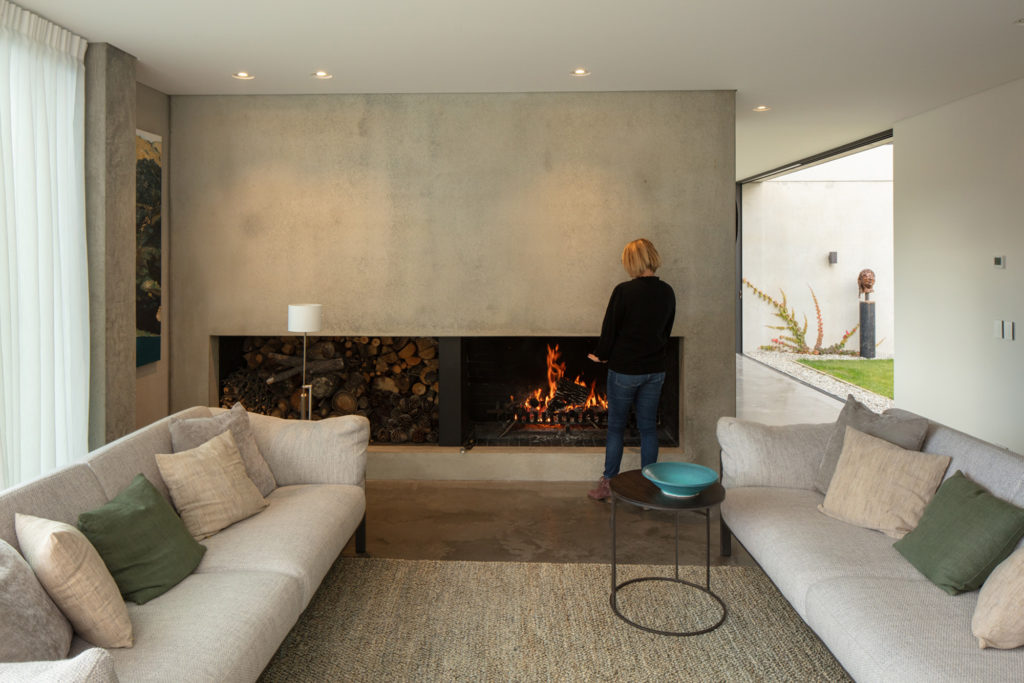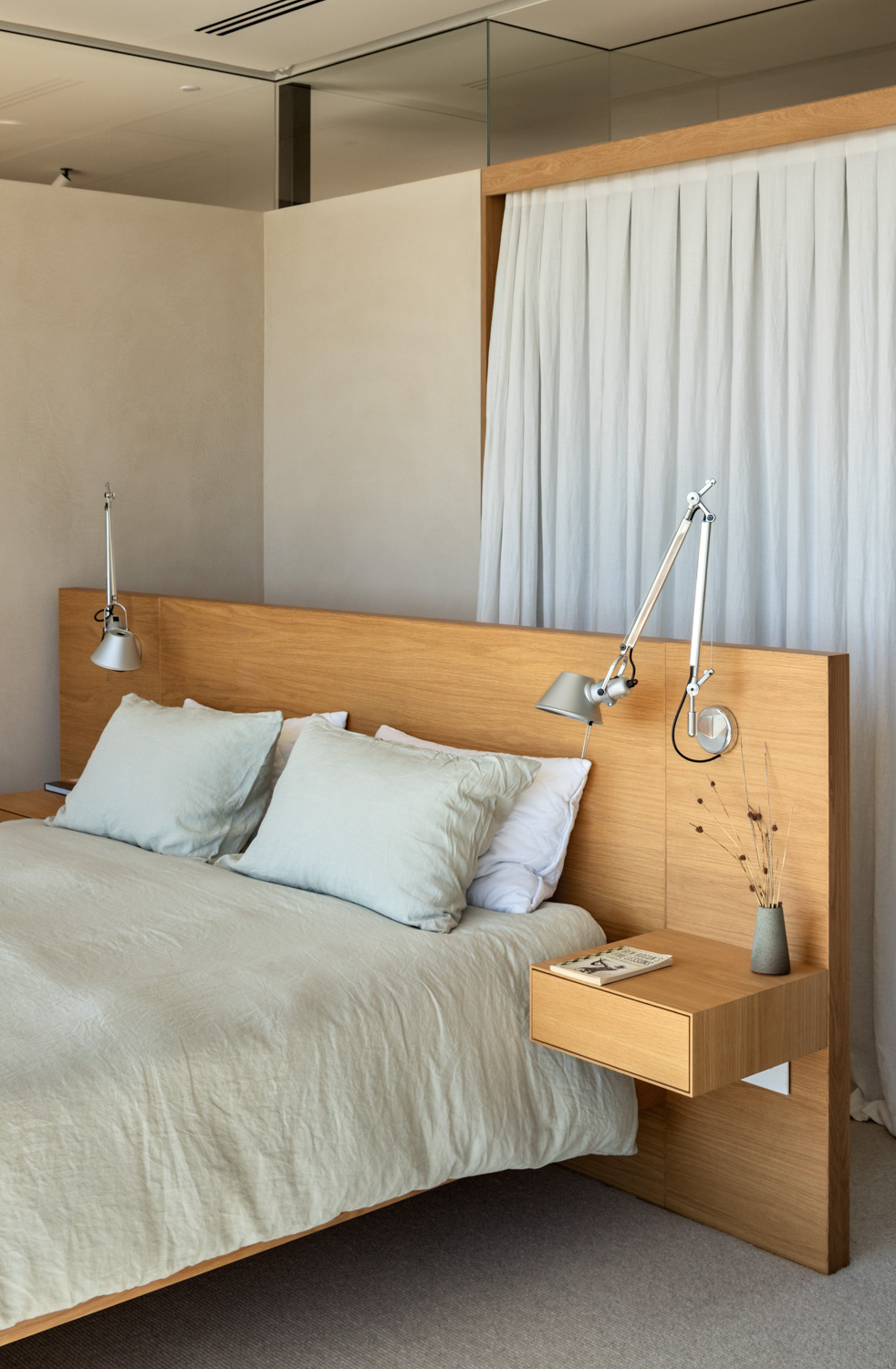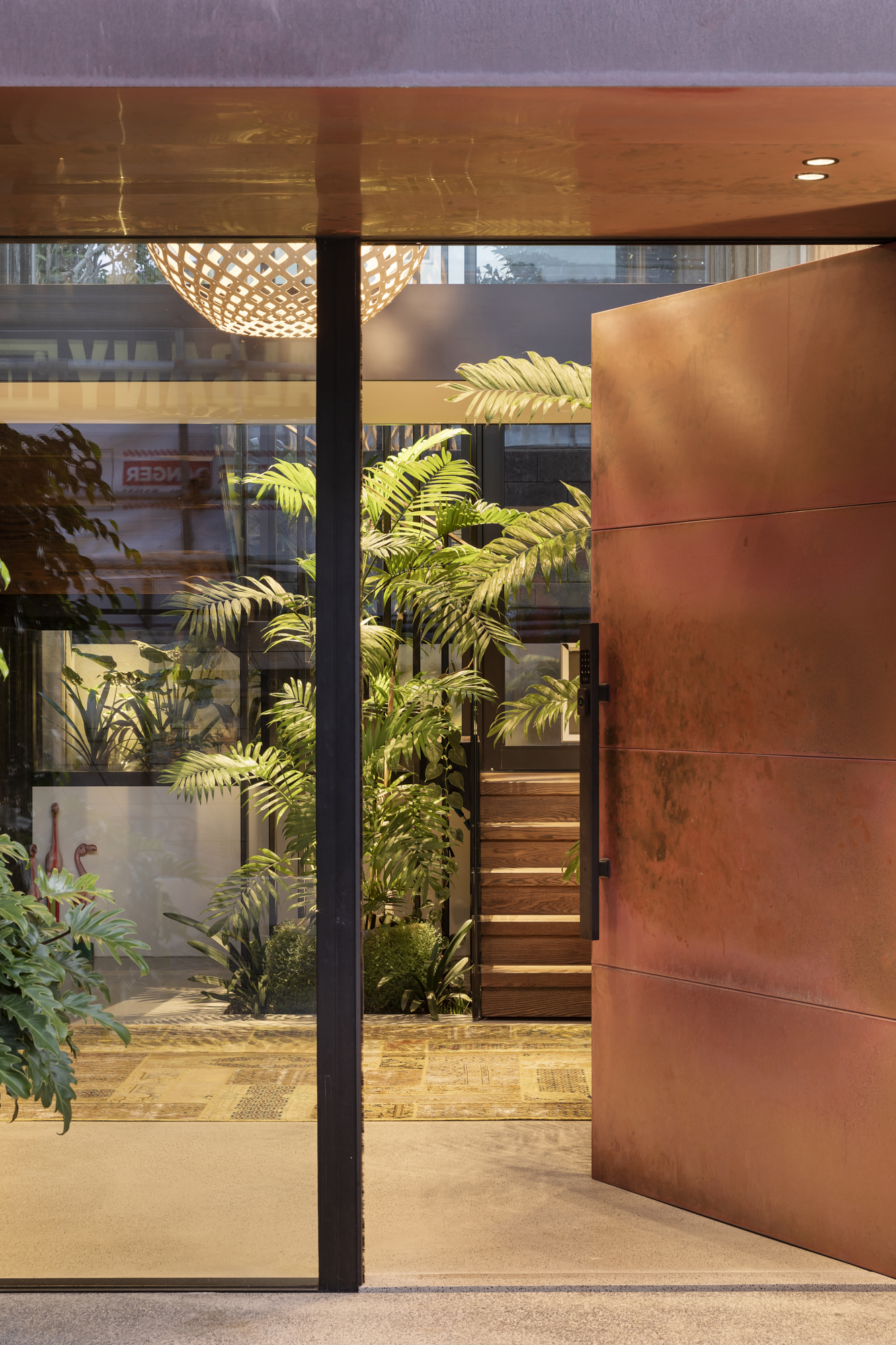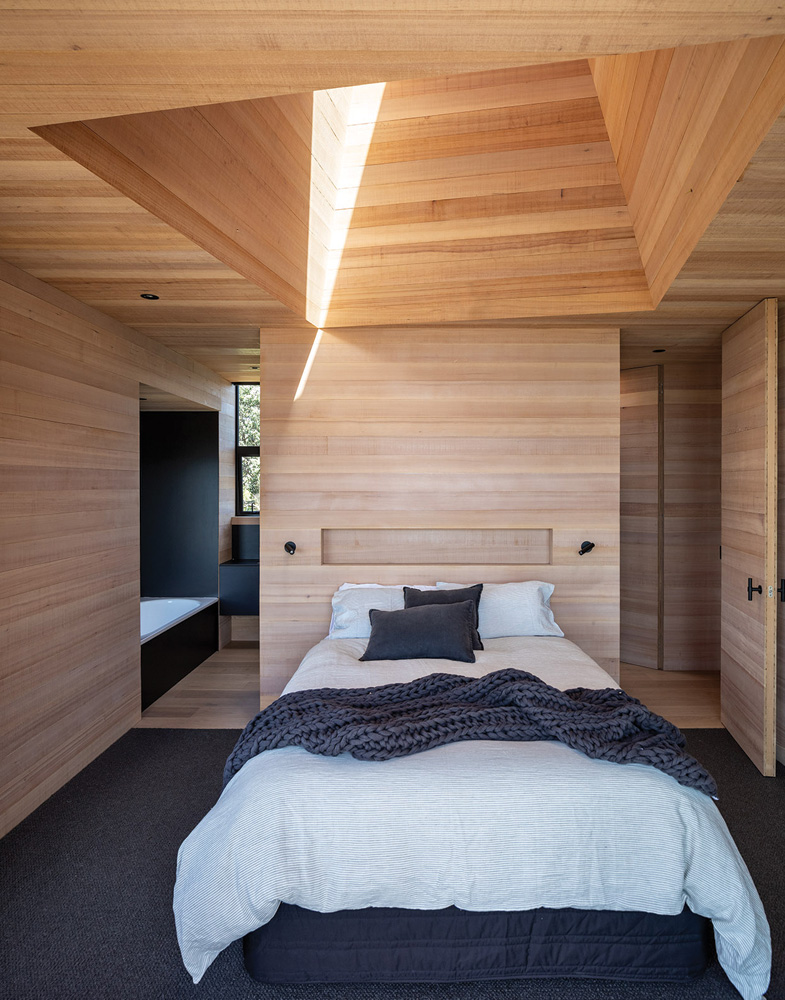The floor comprises a large percentage of the available area in any room to add character, texture and comfort. Here are four houses where the use of carpet and rugs adds an enviable elegance.
Black Quail House, Bergendy Cooke

The 2021 Home of the Year winner, Black Quail by Bergendy Cooke, is set in the harsh landscape of Central Otago. The home is cast in washed concrete, delivering performance in the shifting seasons.
The minimalist internal aesthetic is achieved in precast concrete walls, which meet a polished concrete floor. To add layers of texture and warmth, a loop pile rug has been added to the living area. In a natural hue, the rug complements the earthy tones found throughout the home.
The Dune House, Cheshire Architects

On a golf course in Mangawhai, overlooking a postcard-ready backdrop of land and sea, The Dune House by Cheshire Architects is both a minimalist glass box and magnetic sculptural form. The private spaces needed to be warm, but reflect the climate and spirit of New Zealand coastal living.
The soft texture of the bedroom carpet is a warm welcome from the crunch of the Mangawhai sand and the muddiness of the golf course on the back doorstep. The colour reflects the surrounding tones of the minimalist interior and the palette beyond the four walls.
House on Takapuna Beach by CAAHT Studio

A mesmerising foyer of gold and green. Guests are welcomed into the entryway via a copper-clad pivot door, into a space cast in patterned shadows by the pendant above. The yellow, patchwork rug may seem like a bold choice for this particular area of the house, but the colours are complementary to the mixture of materials and textures surrounding it, providing a textural focal point for foot traffic.
Light Mine by Crosson Architects

A bold carpet of texture and colour isn’t just for the colder climates. Here, deep blue loop-pile carpet creates contrast with the surrounding timber.
Above, in the main bedroom of Crosson Architects’ 2020 Home of the Year, Light Mine, one of the home’s inverted mine shafts exposes the room to the sun and the stars above.
What to consider when selecting carpets and rugs for the home
Rug or carpet? Which option would work best for my home?
When considering the size, needs and aesthetic of interior space, the need for either carpets or a rug comes into question.
The advantages of rugs include their portability, function and maintenance. Rugs are available in a variety of shapes, colours and styles, to act as protection against the timber floorboards, or enhance the visuals of an interior. Contemporary interiors often find a textured rug in a living space or a long-runner in a hallway, adding insulation to the home and a decorative piece to treasure.
Carpets are an investment to any home, to add warmth and texture into a living space. Unlike rugs, carpets are a more permanent fixture so come with more consideration.
Layering carpets and rugs combines texture, style and insulation, especially for the cooler months.
Wool vs. synthetic materials: what are the benefits of each?
The choice between wool and synthetic depends on a number of factors, including the use, budget, durability. Both have their benefits to the prospective buyer.
For the environmentally conscious, locally sourced New Zealand wool carpets are advantageous as natural and biodegradable fibre. The natural breathability of wool soaks up moisture and humidity in a home, making it ideal for warm climates. Another key benefit of this natural fibre is the undeniably luxurious and soft texture of wool underfoot.
Over the last few decades, homes have seen a dramatic shift to synthetic and solution-dyed nylon carpets. Synthetic carpets offer durability, and resistance to stains and fading in sun exposure. For those with young children and pets, a synthetic carpet may prove the best option.
Cut pile, loop pile, or a combination?
Before selecting the style, consider the intended use of the area where you will lay your carpet. Different styles of carpet can show footprints – or tracking – which would determine whether your selection is best for a hallway, or a bedroom, for example.
Available in twist, plush, saxony and frieze, the cut-pile style of carpet is produced with upright fibres, offering a myriad of textures. Cut pile styles are a popular choice, especially for those with cats who like to scratch, as they do not have loops for catching claws. However, cut piles are prone to showing footprints, so their luxurious texture is best kept to the quieter corners of the home.
Loop pile carpets offer different benefits Due to the bounce of loop pile, this style generally shows less tracking compared to cut-pile options, therefore can be best suited to communal areas or those with higher foot traffic.
A combination of loop and cut pile can be used to provide an eye-catching contrast in patterns and textures.
How much does carpet cost?
Depending on the size of the floor, and the material and style of the carpet chosen, the cost will differ. Carpets can cost anywhere between $30 and $100 per square metre, while the cost of rugs can vary vastly depending on the material chosen, where they are sourced from, if the rug specified is bespoke, and of course the size and shape. However, be aware of the underlay and insulation as additional costs.






